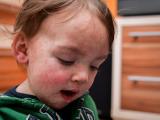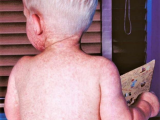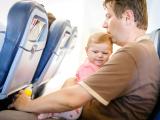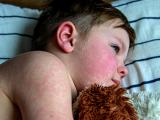Mar 26, 2003 (CIDRAP News) An outbreak of atypical pneumonia that began in southern China last fall was probably severe acute respiratory syndrome (SARS), the mysterious flu-like illness that has spread to 13 countries since late February, the World Health Organization (WHO) announced today.
China today reported that 792 cases of atypical pneumonia, with 31 deaths, occurred from Nov 16, 2002, through Feb 28, WHO announced. In mid-February, Chinese officials had reported 305 cases with five deaths from Nov 16 through Feb 9.
The pneumonia outbreak in China was not included in the global SARS case count until now. The Chinese cases pushed the global count today to 1,323, with 49 deaths, WHO reported. Aside from the 792 earlier Chinese cases, that number includes 41 new cases today, most of them in Hong Kong, and one additional death, in Singapore.
The United States has 40 suspected SARS cases under investigation, with no deaths reported, according to today's figures from the Centers for Disease Control and Prevention (CDC).
A WHO team of five experts went to China last weekend to gather information on the pneumonia outbreak in Guangdong Province, WHO reported. The team "reached the conclusion that the atypical pneumonia cases which began occurring in southern China in November 2002 are likely cases of the same disease, now referred to as SARS, that began appearing in other Asian countries on 26 February," the WHO announcement said.
Previous reports have indicated that the disease may have been spread to Singapore, Vietnam, and Canada by travelers who contracted it while visiting the Metropole Hotel in Hong Kong, where an infected medical professor from mainland China was a guest. The South China Morning Post reported early today that the professor had been treating atypical pneumonia patients on the mainland before he went to Hong Kong, according to an Associated Press report.
The WHO statement said that research into the cause of SARS "is increasingly focusing on the Coronavirus family, though viruses from the Paramyxovirus and other families are also being considered as scientists cast the widest possible net." CDC announced Mar 24 that it had found evidence that SARS may be caused by a new coronavirus, a group of viruses mainly associated with the common cold. Earlier, laboratories in Hong Kong and Germany had reported electron-microscopic evidence that a paramyxovirus is linked with SARS. Paramyxoviruses cause measles, mumps, and canine distemper, among other diseases.
WHO said one new theory is that the disease may be caused by two viruses working together. Experts in the network of labs studying the disease are "considering the theory that SARS is caused by co-infection with two new viruses that somehow need each other in order to cause severe disease in humans."
Chinese health officials have considered Chlamydia species as a possible cause of the atypical pneumonia outbreak, but the latest findings are not supporting that, the WHO statement said. In February, Chinese officials said lung specimens from two patients who died in the outbreak yielded evidence of Chlamydia. This week Chinese authorities asked WHO to help investigate the agent as a possible cause of SARS. Scientists reported yesterday that numerous tests of specimens from SARS patients elsewhere in the world had come back negative for Chlamydia, according to WHO.
Also today, 80 clinicians from 13 countries who participated in a WHO-sponsored electronic conference on SARS agreed that about 10% of patients deteriorate to the point of needing breathing assistance. These patients often have other preexisting illnesses, and many of them die, according to a summary of the conference.
The clinicians reported that no drugs have worked particularly well in SARS patients. "Ribavirin with or without use of steroids has been used in an increasing number of patients. But in the absence of clinical indicators, its effectiveness has not been proven," the conference summary states. Clinicians currently recommend general supportive therapy along with treatment for any complicating infections.
Clinicians described the disease's course much the same as in previous reports, starting with sudden onset of high fever, often accompanied by myalgia, chills, rigors, and an unproductive cough. Patients often have chest x-ray signs of disease by the time they seek treatment. About 80% to 90% of patients begin improving by the sixth or seventh day of illness.
See also:
WHO announcement on Chinese atypical pneumonia outbreak
http://www.who.int/csr/sarsarchive/2003_03_26a/en/
WHO SARS case count
http://www.who.int/csr/sarscountry/2003_03_26/en/
Summary of WHO-sponsored electronic clinical conference
http://www.who.int/csr/sars/cliniciansconference/en/


















